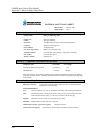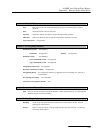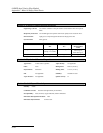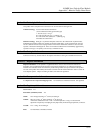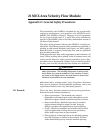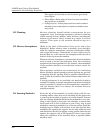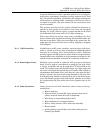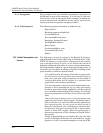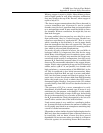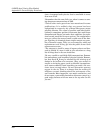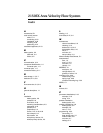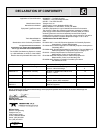
2150EX Area Velocity Flow Module
Appendix D General Safety Procedures
D-4
D.4.4 Emergencies Every member of the crew should be instructed on procedures to
be followed in cases of an emergency. It is the duty of each crew
chief to have a list of emergency phone numbers, including the
nearest hospital and ambulance service, police precinct, fire
station, and rescue or general emergency number.
D.4.5 Field Equipment The following equipment should be available for use:
BlowersGloves
Breathing apparatusHard Hats
CoverallHarnesses
First aid kitsManhole irons
Emergency flashersPick axes
FlashlightRain slickers
Mirror Ropes
Gas detectorsSafety vests
Gas masksTraffic cones
Waders
D.5 Lethal Atmospheres in
Sewers
The following is an article written by Dr. Richard D. Pomeroy,
and published in the October 1980 issue of “Deeds & Data” of the
WPCF. Dr. Pomeroy is particularly well known for his studies,
over a period of nearly 50 years, in the field of the control of
hydrogen sulfide and other odors in sewers and treatment plants.
He has personally worked in a great many functioning sewers. In
the earlier years he did so, he admits, with little knowledge of the
grave hazards to which he exposed himself.
“It is gratifying that the subject of hazards to people work-
ing in sewers is receiving much more attention than in
past years, and good safety procedures are prescribed in
various publications on this subject. It is essential that
people know and use correct procedures.
“It is less important to know just what the hazardous com-
ponents of sewer atmospheres are, as safety precautions
should in general be broadly applicable, but there should
be a reasonable understanding of this subject. It is disturb-
ing to see statements in print that do not reflect true condi-
tions.
“One of the most common errors is the assumption that
people have died from a lack of oxygen. The human body is
able to function very well with substantially reduced oxy-
gen concentrations. No one worries about going to
Santa Fe, New Mexico, (elev. 2,100 meters), where the par-
tial pressure of oxygen is equal to 16.2% (a normal atmo-
sphere is about 21%) oxygen. “When first going there, a
person may experience a little ‘shortness of breath’ follow-
ing exercise.
“People in good health are not afraid to drive over the high
passes in the Rocky Mountains. At Loveland Pass, oxygen
pressure is 13.2% of a normal atmosphere. At the top of Mt.



